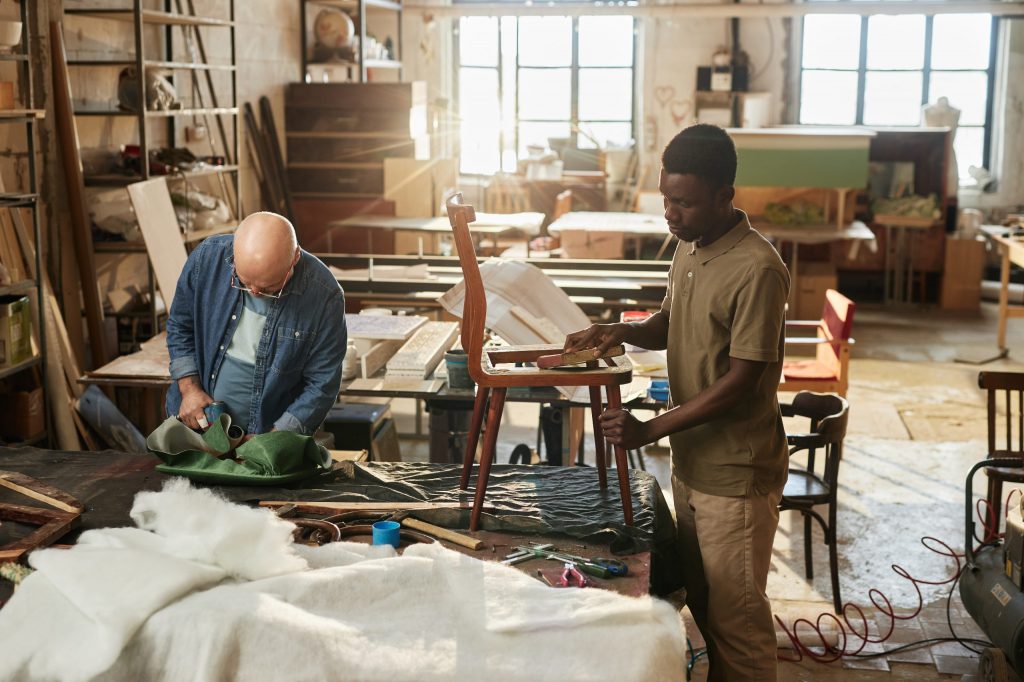Starting your woodworking journey is thrilling — but safety should always come first. Whether you’re working in a compact home workshop or a spacious studio, developing safe habits protects you and ensures your creative process remains enjoyable and productive. At Craft Furniture Workshop, we believe that good safety practices empower you to work confidently and focus on what matters: bringing your furniture ideas to life.
Why Safety Matters
Woodworking involves sharp tools, power equipment, dust, and heavy materials. Accidents can happen, but many are preventable with awareness and simple precautions. Establishing safe routines not only protects your body but also extends the life of your tools and materials.
Key Safety Tips for Beginners
1. Wear Proper Protective Gear
- Safety Glasses: Protect your eyes from dust, wood chips, and flying debris.
- Dust Mask or Respirator: Fine wood dust can irritate your lungs; always wear a mask when sanding or cutting.
- Gloves: Use gloves for handling rough materials but avoid loose gloves near power tools.
- Ear Protection: If using loud machinery, ear plugs or earmuffs can prevent hearing damage.
2. Keep Your Workspace Clean and Organized
- Clear away scraps, sawdust, and clutter regularly.
- Keep tools stored properly to prevent tripping hazards.
- Good lighting helps you see clearly and avoid mistakes.
3. Understand Your Tools
- Read manuals and watch tutorials before using any tool.
- Start slowly and practice on scrap wood.
- Never force a tool to work faster than it can handle.
4. Use Clamps and Supports
- Secure your workpiece firmly to avoid slips.
- Use sawhorses or benches designed to hold wood steady.
5. Mind Your Posture and Movements
- Maintain a balanced stance.
- Keep your hands away from cutting blades.
- Work at a comfortable height to reduce strain.
6. Check Tools Before Use
- Inspect blades, bits, and cords for damage.
- Make sure power tools are unplugged when changing parts.
- Replace dull blades promptly — they increase accident risk.
7. Plan Your Cuts and Actions
- Think through each step before starting.
- Avoid distractions while using sharp tools or machinery.
- Don’t rush — precision improves with patience.
8. Store Chemicals Safely
- Keep finishes, adhesives, and solvents in labeled containers.
- Store them in cool, ventilated areas, away from children and pets.
Creating a Culture of Safety
As you progress, safety becomes second nature. Encourage family or friends who share your space to follow rules too. Teach children about tools only under close supervision, and always lead by example.
Final Thoughts
Safety isn’t just a set of rules — it’s the foundation for a joyful, creative woodworking experience. By respecting your tools, your environment, and your body, you set yourself up for success and many years of rewarding projects.
At Craft Furniture Workshop, your well-being is as important as your craft. Take these safety tips to heart, and build your furniture — and your skills — with confidence.

